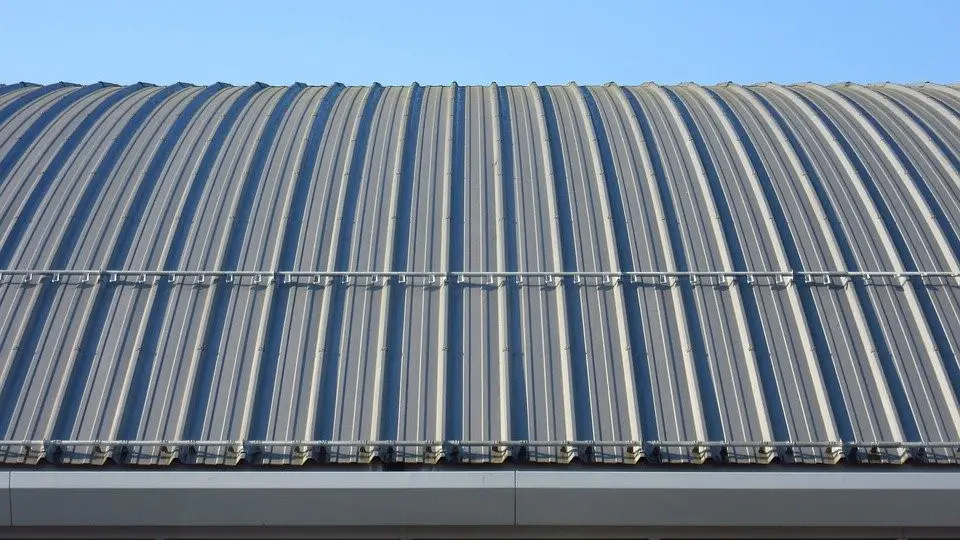One of the protective features of your home or commercial building is the roof. The basic function of a roof is to help offer protection from the elements for people and belongings on the inside while also offering insulation and temperature regulation in all four seasons. You may have a traditional asphalt shingle roof, but what if there was a better option available?
Metal roofing is becoming a more popular option in residential and commercial builds. Even with the growing popularity, you may not be aware of the “why” behind the growing trend. That is why we want to introduce you to five facts you may not know about metal roofing – energy-efficiency, low maintenance requirements, recyclability/sustainability, durability, and weather-resistance.
1. Energy-Efficiency
If you have ever stood on asphalt in the summer, you know that it absorbs the heat. The same applies to the asphalt shingles on your roof. These shingles absorb the heat, creating an increase in the amount of heat inside your home or commercial property.
On the other hand, metal roofing can help reduce the amount of heat your home absorbs during the summer months. Metal roofing reflects the sun, and even special coatings can be added to increase the amount of reflective properties. Studies have even shown that metal roofing reflects the solar radiant heat to reduce cooling costs by up to 25% in some instances.
2. Low Maintenance Roofing Option
Any roof that you choose for your residential or commercial building has a lifespan. You can expect replacement as early as 15 years after it is installed for asphalt roofing, depending on the material and the installer’s skill. Metal roofing may not need any major replacement or changes made for up to 50 years, except for minor resealing every 20 years. Roofing materials made of metal are made to be rust-proof, meaning that you won’t have to worry about corrosion. Resealing at the seams is often the most effort required to ensure that the joints remain waterproofed.
3. Metal Roofing is Sustainable and Recyclable
Metal is a recyclable material, and most metal roofing is made using recycled metal products. You can also have peace of mind knowing that when an old metal roof is removed, it is often turned into the local metal recycling facilities. Did you know that more than 20 billion pounds of asphalt shingles end up in landfills across the country each year? Your roof can help mitigate the carbon footprint you leave on the planet.
4. Metal Roofing Just Lasts Longer
The life of the metal roof lasts between 40 and 70 years, depending on conditional factors. Sure, these roofs may cost more than the traditional asphalt roofs, which is why people tend to choose the cheaper option. Still, in the long run, they end up replacing the shingles more often than they do the metal roofing sheets.
If you factor in the cost of maintenance (with metal, there is virtually none), energy cost reduction, and how resistant metal is to the elements, you can see where the savings add up to the difference, and the durable roofing option of metal can by far surpass the use of asphalt shingles. Most metal roofing lasts up to three times longer than other roofing materials. Shouldn’t you consider what it would be like to live out the rest of your mortgage without replacing your roof?
5. Resistant to Elemental Forces
Metal roofing offers more than just longevity for residential and commercial building owners. Unless you are under the threat of constant hail, your metal roof will likely be able to withstand the beating of weather and other elemental conditions. Hail, like rocks, can create dents in your metal roofing if exposed frequently, which would require professional repair.
In other circumstances, metal roofing is highly resistant to other elements such as wind, water, fire, and other natural occurrences that may cause damage to traditional asphalt or wooden shingles. Metal roofs also help to deter mold, rot, and insect damage from occurring. Can you say the same about traditional asphalt shingles?
Snow is more likely to slide off a metal roof than one that is shingled. The snow sliding allows for the snow and ice to not sit as it would on asphalt, saturating the areas as the snow or ice melts.
Why You Should Consider Metal Roofing
Metal roofing is something that you need to consider if you are in the market for a new roof. Metal roofing isn’t for everyone, but there are some major advantages to using these materials that you should think about. After all, how do your current utility bills look during the summer and winter?
There is an ease to adding a metal roof over your existing roof. Contractors can install a metal roof over your existing asphalt shingles without the requirement to remove them before securing the new roof. Your asphalt shingles are now covered with a waterproof, weatherproof, and sustainable roofing option that is eco-friendly. You don’t have to worry about your shingles ending up at the dump.
So, if you are looking for a new roof, why should you consider metal over other materials? We have given you five reasons to consider when looking into roofing, especially a metal one. Metal roofing offers you more energy-efficiency, low maintenance options, sustainability/recyclability, longer-lasting and durability, and more resistance to unruly weather. Reach out to your local metal roofing company for more information on how you can change your roof to an eco-friendly metal alternative.
Author Bio:
Brian Haraf is the VP of Sales and Marketing at Metal Sales Manufacturing Corporation. With 21 facilities nationwide, Metal Sales manufactures metal roof and wall panels for the agricultural, commercial, architectural and residential markets since 1963.

